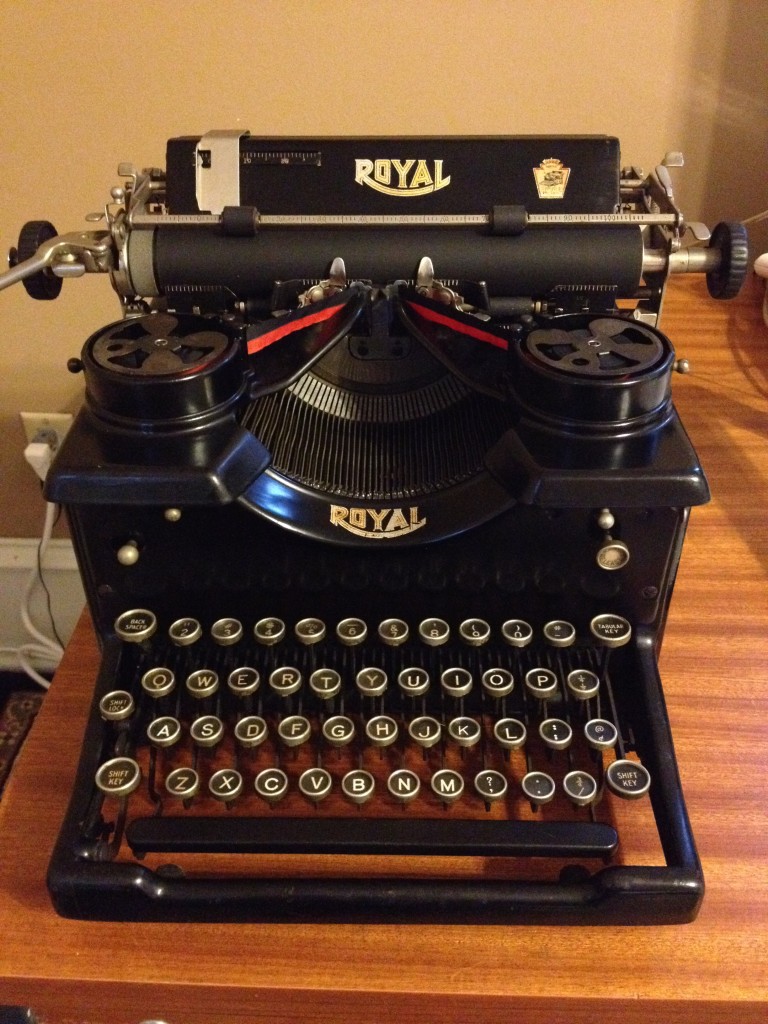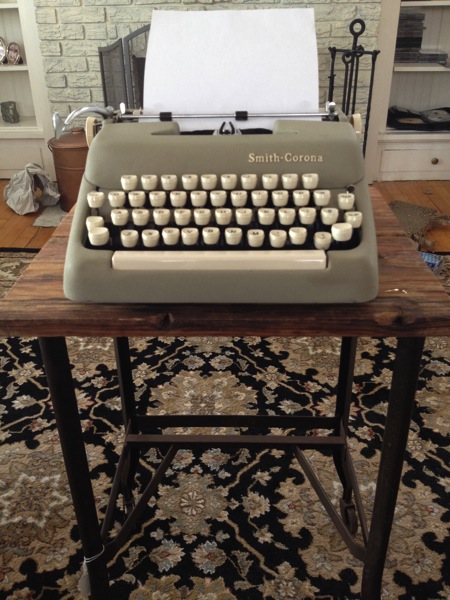My creative writing process has changed a lot over the years. Back in 2001 when I was commuting between Reading and London on a daily basis, I was doing most of my writing on a Philips Velo, a delightful little device that was a bit bigger than a PDA, had a full keyboard, but was lightweight and easy to carry around.

In 2004-ish I got my first decent laptop, a by then already quite old Mac Tibook. I started writing on that, instead, given that I was carrying it around so much anyway. The laptop remained my tool of choice for a long while, with only the model, operating system and writing software changing.
Of course, I still used pen and paper, keeping ideas in various notebooks, but I didn’t take longhand writing seriously until I started using a Livescribe Echo smartpen, which Kevin had bought for me one Christmas a few years ago. I loved it – I could write a first draft by hand, upload it to my Mac, and then put it through handwriting recognition software and skip the typing up process.
The problem was that longhand writing takes so, well, long. I needed to write carefully so that the software could understand my scrawl, which meant writing relatively slowly. That’s fine for a short story or a novelette, but would be a real drag for a novel and, if I’m honest, probably contributed to my not actually starting one.
That said, writing slowly is a good thing for my brain. I can touch type quite well, and writing a first draft of fiction on my computer would invariably lead to my fingers moving faster than my brain and taking my characters down ill-considered routes that usually ended up in narrative disaster.
There’s a great talk by Clive Thompson on the differences between writing by hand and typing which is well worth pausing to watch.
(The bit about people taking notes on a laptop turning into verbatim transcriptionists? Yeah. Me. Totally. Was almost famous for my conference notes for a while. I must say, though that transcription fluency only works if your idea are already queued up, it’s no good if you’re still organising them.)
I need to have a relatively slow way of writing in order for my brain to have time to properly consider what comes next. Handwriting provides slowness. But perhaps too much slowness.
As is inevitable with technology, the screen on my Echo died. The pen itself still works, but I can’t tell if it’s turned on or off, which is a bit of an issue. I’d find myself constantly turning the volume up, just so that I could hear it click and feel reassured that the thing was on and recording my writing. At that point, I fell very much out of love with the Echo, and with Livescribe as a company. I expected the Echo to last longer than the 18 months than it did and, given that the screen dying is a common problem with the Echo thus indicating a manufacturing flaw, I’d expected better than just ‘buy another’.
After the Livescribe, I tried various iPad apps in an attempt to find a new way to write longhand digitally. One such app, SmartNote, actually has fantastic handwriting recognition, but the user interface is irritating in the extreme. Not only does the interface not right itself when you turn your iPad round, you can only write one paragraph per page, and each page is really very short. That might be fine if you’re writing little notes, but it’s no good if you’re doing something meatier. Again, the idea of writing a whole novel this way was enough to put me off the whole idea.
I also found myself starting to worry about permanence. If I write a novel on my iPad, what happens if it crashes and loses my work? Or if I lose my iPad and haven’t had a chance to back it up? Not new problems, to be sure, but ones that I hadn’t worried about when writing longhand, because I always have the hard copy to fall back on.
The antique typewriters
Last March, I flew over to Sheboygan from the UK to pick a house with Kevin. The day after I landed, I was going round houses, looking for a place to live. We settled on a lovely house, built in 1900 and now showing just how badly the poor thing has been hacked around by overenthusiastic DIYers. But whilst we were driving round, looking at houses, we stumbled on an estate sale (house clearance sale). Sitting on the floor in the basement was a typewriter, a Smith-Corona Sterling, which I later found out was built in 1960, in its original case. We bought it for $12, and then I went back home to the UK.
Fast forward nearly a year, and New Year’s Day saw us driving through Rockford, IL, and past the antiques mall where Kevin had bought his gorgeous 1935 Royal Standard Portable typewriter for $18 some 20 years ago. I had been playing with Kevin’s Royal Standard and had totally fallen in love with it. Yet it felt a bit odd to be writing on someone else’s typewriter, rather like it feels wrong to use someone else’s pen, so getting one of my own became a priority.
Looking round the mall, we stumbled on a gorgeous Royal, with little windows in the side and the old round glass keys that mark out an early typewriter. It was a Royal Number 10 from 1930, in great condition overall but desperately in need of a clean and some TLC, which I have not yet had a chance to give it. The type bars are all mucky and they don’t connect with the platen evenly, so the type is both faint and blotchy.
But until I have some time to devote to cleaning up the No. 10, I’ve been using the Smith-Corona. When we first took it out of its case, it was a bit stinky and very gummed up, but Kevin cleaned it out and after a bit of use it works just fine. Apparently, typewriter connoisseurs believe that it is one of the best typewriters ever built. I find it harder going than the No. 10, which has a much lighter, smoother action.
Still, I got a myself an old typing table and now my typewriter set-up is complete.
A new process
And so, over the last few months, a new writing process has evolved. At the moment, all my first drafts are written on the Smith-Corona Sterling. I then do the first edit on paper, before typing it up in Scrivener and at the same time, doing a second edit. Then it gets printed out, read by Kevin and then I do a third edit on paper, with those corrections and a fourth edit in Scrivener again.
It’s a fairly paper-intensive process, but I’m pleased with how it’s working out. I feel more excited about writing, and more connected to the physical process of getting ink on to paper. For some reason I find it much easier to edit on paper. There’s something very satisfying about scribbling red ink all over everything.
I also get my hard copies, although they aren’t in nice neat notebooks, which is a shame, but I can still file them away and refer back to them if needed. And when I’m travelling, I can still use my laptop or write longhand in a notebook if I want to. I’m not married to the typewriter, but I do find it a very comfortable and creative way to write.
I will switch to the No. 10 eventually, though I won’t get the time until April to clean it up. I already have new ribbons for it, though, so all I need to do is get some denatured alcohol and find some instructions written for idiots and the time to devote to it, and away I go! And, come the spring, I’ll be taking the typing table apart too, refinishing the top and painting the frame. By summer, I hope to have the perfect set-up, and it amuses me that, after all these years of experimentation, I’m finally settling on a piece of technology that’s 85 years old.
{ Comments on this entry are closed }






